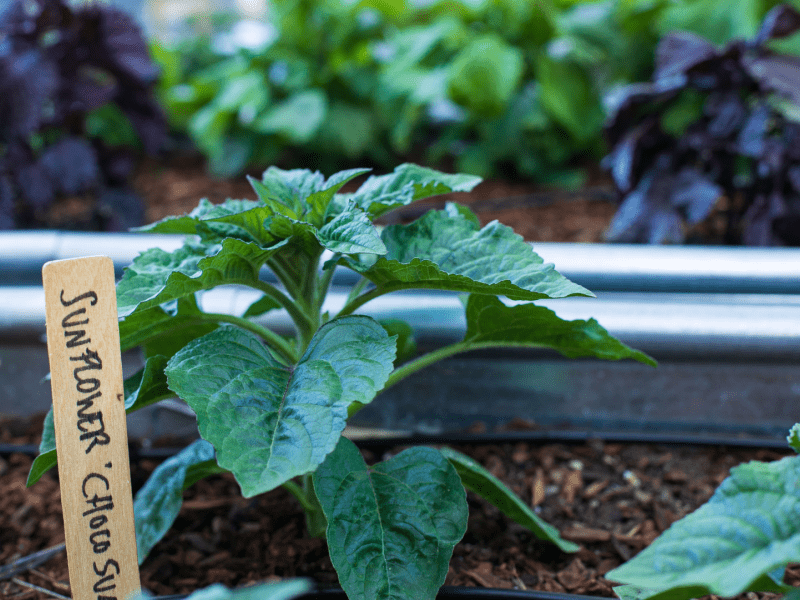Elevate Your Gardening Game with These Tips from Farmer Nick
Plantrepreneur Farmer Nick is one of the best people to turn to when you’re looking to take your garden to the next level.

Similar to our mission, Farmer Nick’s mission is to act—and inspire others to act—in the best interest of nature, and he does so by helping those around him feel confident creating their own gorgeous green spaces.
Nick published this piece on his blog back in the spring, sharing his inside tips on elevating your home garden and making it flourish with his favorite low-maintenance fruits. Together, we’ve decided to share this piece on The Field Guide, so it can reach a wider audience—to help gardeners all over the world optimize their garden space and feel empowered to grow their own food.
From Farmer Nick
Learning to grow my own food has been the most empowering life skill I’ve ever developed. It may seem like a great deal of effort to grow a few tomatoes (because it is), but the results are 100% worth it. Not only will they be the best tasting tomatoes you’ve ever had, but it will provide you with a different perspective; one that empowers you with knowledge and a new appreciation for the environment, the plants, and the farmers that grow our food.
I’ve toured countless farms across the country and around the world, and although I may not be a real farmer (yet,) I will grow food for the rest of my life. As a steward of the earth, this is my mission, and the best part is that you can do it, too. There is no better time to start than now, and I’ve compiled a list of my top tips and tools to help you get started.
Tip 1 - Assess Your Space Before Planting Anything!
Understanding your climate and growing zone is imperative before you head out to the nursery! Knowing your average frost dates is key to creating a growing calendar, and it also helps you devise a planting schedule throughout the year. Every season I create a spreadsheet of the garden that shows where each plant will go, when it should be planted, and how long it will take to reach maturity or harvest. This helps me plan what seeds I should be starting indoors so there is no wasted time or space in the garden. It also creates a historical record of my garden and provides insight season to season.
Once you understand the climate you’re growing in, it’s time to assess the physical plot of land you’ll be using. Studying the soil texture (clay, silt, or sand) is a great first step to see what amendments need to be made and understand which plants will grow best (for example: leafy greens and blueberries do best in sandy soils). If you’re concerned about the soil quality, opting for a raised bed with fresh soil and a layer of compost is a great way to get started.
Sun exposure is the next most important factor. Measuring the hours of direct sunlight over the course of a full day will give you an idea of what plants can go where, and it is good to note which areas get full sun (6-8 hours) vs. partial shade (4-6 hours). Certain plants can grow well in shaded areas and will burn if given too much sun, which is why I love planting leafy greens below my tomatoes in the summer months. The tomatoes are taller and as they soak up the direct sun, the shade-loving leafy greens thrive in the understory.
Tip 2 - Plant Selection + Timing
Determining what I want to grow depends on my culinary palette. What do I love to eat? What has a significant harvest? And can it all fit in the garden? Are all good questions to ask yourself before planting. If you’re starting a garden for the first time or just want some easier, low maintenance options, start with the following:
Raspberries - Raspberries are a perennial crop and will come back each year with a bit of strategic pruning. There are summer and fall fruiting varieties in all shapes and colors, and they'll do well with a sturdy trellis for their vigorous growth.
Figs - Figs are expensive at the farmers market, so why not grow your own fig tree? Figs love the sunny weather and produce a ton when they're established, but make sure they stay well watered in the summer heat.
Blueberries - Blueberry bushes are a staple in the Northeast US but can be grown anywhere with the right soil conditions. They prefer sandy, more acidic soil to produce the most fruit, but these delicious berries need protection. Use netting to keep the pesky birds and rodents away from your harvest.
Herbs are also relatively easy to grow, and harvesting them fresh from your garden will take your culinary adventures to the next level. They also don’t need a ton of space, which makes them a great option for those who want to grow indoors as well. I started growing herbs on the windowsill inside my New York City apartment, and the key here is making sure you have enough light. A south-facing exposure is best for most herbs, but if you don’t have enough light, don’t be afraid to install a grow light nearby. This will give your herbs a boost and keep the harvests coming no matter what season you’re in. Personally, my favorite herbs to grow are thyme, rosemary, basil, and cilantro, and although all of these options can be started from seeds, don’t be ashamed to buy seedlings at your local grocery store or farmers market. It will give your herb garden a head start and you can simultaneously start your seeds by reusing the plastic nursery pots.
Tip 3 - Harvesting Techniques
Where you make your harvesting cut can influence how your plant grows. For example, most people just pull the leaves off of their basil, but if you cut along the stem (also known as the internode), it will encourage bushier growth from the two lower growth points. You can even toss this cutting in water to propagate it! Once it grows more roots, you can plant it in its own pot.
Practicing the “cut and come again” method, especially for lettuces, is recommended to keep your plants producing longer. This involves pruning the outer leaves and leaving the rest of the plant intact so it can continue growing from the center. This will extend your harvesting window, and you can harvest the entire plant at the end of the growing season or when you have a seedling ready to take its place.
Although not technically a harvesting technique, “succession planting” is ideal for ensuring a consistent harvest. Sure, you can harvest that entire head of lettuce, but make sure you’ve got a seedling on deck to replace it in the garden. Succession planting is when you’re starting seeds and growing seedlings that will replace the freshly harvested crop, and growing them simultaneously will minimize the amount of time your garden is bare. There’s nothing worse than staring at an empty pot, and advanced gardeners are planting seeds all year long.
Tools
A great gardener always has quality tools on hand for every type of plant and produce. Anytime I’m walking into the garden to harvest I’m carrying a pair of Fiskars snips for herbs, a folding harvesting knife for leafy greens, and a larger Hori Hori Knife for those bigger crops like squash and cauliflower. Tools like these make clean cuts that limit the spread of disease and infection for the plants, and they make the harvesting process much more time efficient.
Tool 1 - Seed Block Maker
Bye bye, plastic seed trays! The Fiskars Soil Block Maker is one of the coolest gardening tools I own, and it is perfect for germinating my seeds. Because there is no outer plastic layer, the soil block encourages a strong root system via natural air pruning while also preventing young plants from becoming root bound. The soil block provides a more efficient uptake of water and nutrients which also helps reduce transplant shock. Plus you can make one large soil block for bigger seeds or four smaller blocks for your smaller seeds.
Tool 2 - Pruners and Shears
Carrying a pair of pruners and shears every time I walk out into the garden is essential. I use the Fiskars Pro Pruner for heavy duty pruning and the small Fiskars Herb Shears for finer, aesthetic adjustments. The shears are perfect for harvesting edible flowers and removing tomato suckers while the pruners are great for learning out my corn stalks at the end of the season.
Tool 3 - Harvesting Knives
I’d never used harvesting knives before trying out the Fiskars Hori Hori Knife but they have quickly become a favorite in the garden! It has both a serrated and flat edge, along with a forked tip for weeding your garden. Not only does it allow me to harvest a larger amount with one cut, I can use it to prepare my vegetables for cooking. This was especially handy for the epic cauliflower I grew on my Lettuce Grow farm stand and it is certainly strong enough to take on the thick stems of the brassica family.
For smaller stems and shears, I opt for my Fiskars Folding Produce Knife, which I can safely keep in my pocket. It’s super compact and ideal for navigating the dense growth of my herbs and edible flowers.
Check out Farmer Nick's visits to 1 Hotel San Francisco, 1 Hotel West Hollywood, and 1 Hotel Central Park.













